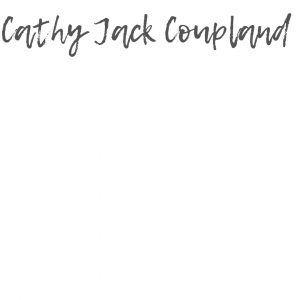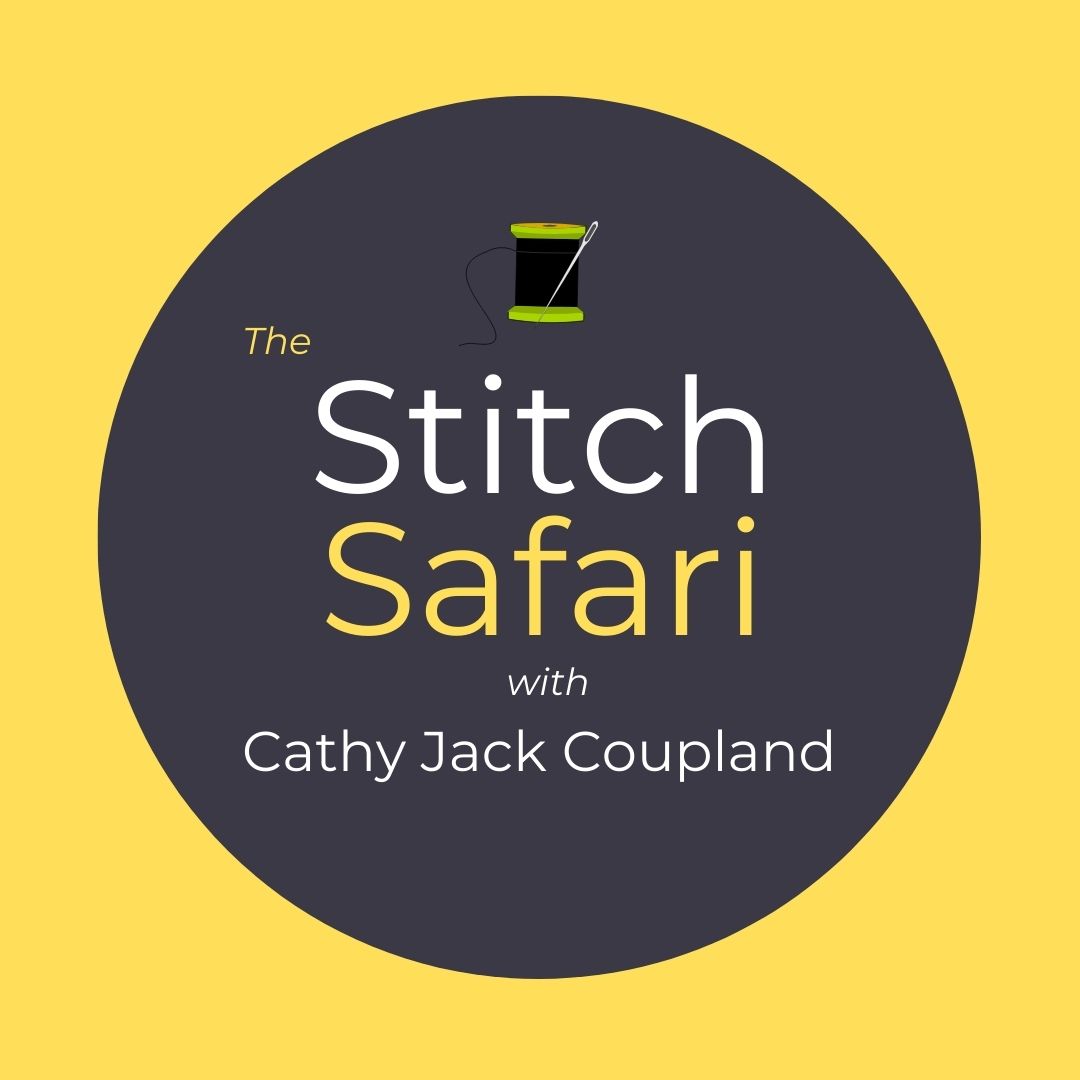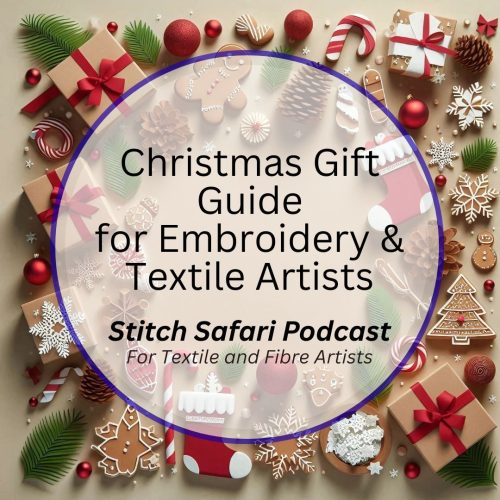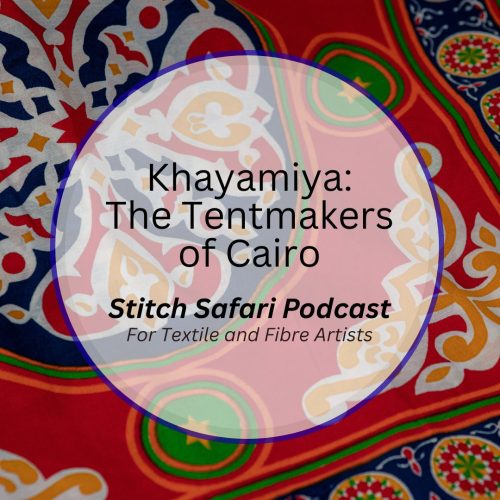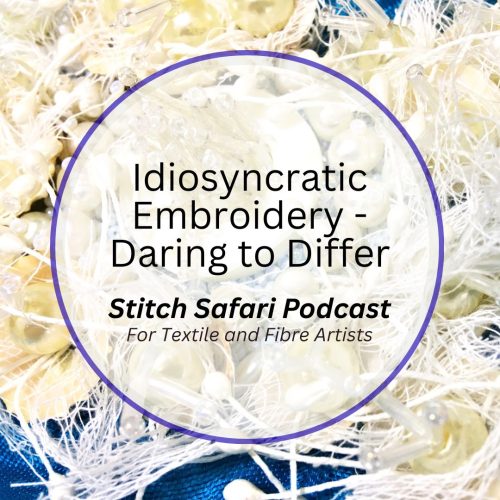How good is it to sit at home and watch fascinating, well-produced, inspiring videos?
Sometimes, it’s so much easier and more relaxing to have the world come to you via a TV or computer screen and now that TVs are more like computers, you can choose to watch things like how to make a Cinderella skirt, recreate a Harry Potter look or even make a Bat costume from the 1800s – I kid you not.
So you wouldn’t be surprised to learn how many YouTube channels offer videos on recreating historical costumes and embroidery – there are, in fact, quite a few.
The COVID-19 epidemic certainly re-ignited a love for hand-based work along with re-purposing pre-loved clothing. The shows I’m honing in on in this episode are about recreating historical clothing from scratch, including embroidery.
A simple Google search will turn up numerous channels and I’m not saying they’re all good, but I have to acknowledge that some are very good indeed – and well worth watching.
So in this episode, I’m going to review three YouTube videos that offer interesting, well-researched content – shows that deliver when it comes to interest, technique and presentation – and that’s a lot to ask from a video.
Let’s see who and what those videos are.
Over the last decade or so, there’s been a quiet revolution especially relating to sewing and replicating patterns and embroidery. Videos are a simple and effective way to share this new content.
Technology has taken off and almost anyone with a mobile phone can upload videos or images onto a YouTube channel – but that isn’t all it takes to create content – there’s a lot more thought and effort that has to go into making a good video if you want people to engage, things like presentation, lighting, audio and editing to name just a few.
You have to tell a story and make that story interesting.
Some videos are shot professionally, some are spin-offs from TV shows and some are presented and produced by individuals to a very high standard.
What I’m looking for though is good, solid content – it has to be interesting and it has to be embroidery or sewing-related too and I was pleasantly surprised at how many are out there.
Now I discovered Bernadette Banner about four years ago – she’s an American YouTuber, author, and former costume assistant currently based in London.
Banner intrigued me from the get-go because of her overt love of history and passion for historical sewing and sewing techniques evidenced by her videos on costume reconstruction ranging from Medieval to World War I, focussing on the Victorian and Edwardian eras – and her presentation style is exquisite.
But that’s not all. Banner is an active spokesperson against the fast fashion industry highlighting its environmental devastation and poor labour practices.
In 2022 she authored a book, ‘Make, Sew and Mend – Traditional Techniques to Sustainably Maintain and Refashion Your Clothes, Published by Page Street Publishing – it was a bestseller and on Amazon received 5 stars from 2,037 ratings.
Banner has a website https://bernadettebanner.co.uk/ titled Dress History for the Internet Era and deems herself an education content creator exploring the reconstruction and reinterpretation of fashion history, so when I saw her latest video titled ’18th Century Embroidery – It’s No Joke – (Trust Me We Tried It) – I knew it would be worth watching.
The video runs for 33 minutes and is beautifully shot and edited – that alone makes a huge difference.
It’s snappy and it tells a good story, featuring expert input from the Hand and Lock embroidery studio in London – established in 1767 and still responsible for providing embellishment services to the royal family, top European design houses, The Royal Armed forces, Saville Row, film and theatre along with members of the public – these people certainly know what they’re about.
What garnered my interest was the collaboration of techniques used to recreate this garment and the initial design brief – this is bespoke embroidery at its best.
There’s a brief mention of Eastern embroidery and design influences feeding a hungry Western market featuring a glimpse of Shah Jahan’s amazing hunting coat worked in crewel work using natural or realistic design influences.
Banner chose a man’s 18th-century court waistcoat for this project and the project uses modern-day technology to recreate the original style of work.
There’s a combination of digital machine embroidery, hand-guided machine embroidery, hand embroidery, Goldwork, couching, and silk shading – or as Banner deems it ‘a cocktail of techniques’.
Historical techniques from the 18th century collide with modern efficiency from the 21st century.
Beautifully shot and edited, this is a great presentation and for anyone interested in embroidery and the recreation of techniques in this modern era.
Visit Bernadette Banner’s YouTube channel and look for 18th Century Embroidery It’s No Joke – Trust Me We Tried It!
Moving back to 2018.
Amber Butchart, a British Fashion Historian researches and presents documentaries for TV and radio – one of which was the BBC TV series, A Stitch In Time.
Butchart teaches at the London College of Fashion and consults with British police as a forensic garment analyst. She’s also published several books on fashion history.
As the lead for A Stitch In Time, she was perfect.
Butchart’s website states that this six-part series fuses biography, art and the history of fashion to explore the lives of historical figures through the clothes they wore.
The Guardian describes the series as ‘snappy and engaging’. The Telegraph, ‘hugely enjoyable’ and ‘mesmerising’ by Radio Times.
The series comprises Charles II, The Arnolfini portrait by Van Eyck, The Hedge Cutter, Dido Elizabeth Belle, The Black Prince – my favourite, and Marie Antoinette.
Each episode is just under 30 minutes and utilises experts to recreate the garments.
Butchart provides a polished and informative performance brimming with historical references that moves quickly to the completion of the chosen garment.
Yes, this series has been out there for a while, but I believe it’s still a five-star watch.
The YouTube channel Absolute History offers all six episodes – have a look and be mesmerised by the recreation of these historic garments.
The last video for presentation is by Cathy Hay, British costume artist, creator and publisher of something called Foundations Revealed – an organisation that helps dressmakers connect, stay inspired and hone their skills to realise their sewing dreams.
Hay is also passionate about re-engineering old clothes and recreating clothing from the past, so as she says ‘it can step out of the glass museum case and live again’.
I’m focussing on her project of recreating an Arts and Crafts era, 1890s, velvet coat from Marshall and Snelgrove, (a large department store from that time), especially her visit to The Royal School of Needlework and interview with Studio Manager Gemma Murray.
Now Cathy has made several videos dealing with this coat, however, I found two of her videos of interest, ‘How To Embroider A Historical Recreation: The Royal School of Needlework’s Advice’ and ‘I Made 3 Months Progress In 1 Month – Hand Embroidery For A Velvet Coat’ both of interest. There are more in the series if you have the time to watch them all.
One asks for advice from a professional embroiderer and the other shows her working on the garment fabric in the frame.
The first video is 24 minutes long and is well-shot and interesting. The coat is stunning and the questions Hay asks are the ones we’d all be thinking about – especially how to handle velvet for hand embroidery.
Advice is given about colour, threads, needles, frames and framing and stabilizing that velvet – as we all know working with velvet can be problematic. It’s simple, yet sound advice.
The second video is 22 minutes long and is beautifully shot – Hay’s stitching in a Church where she talks about May Morris and her father, William Morris who just happened to have designed one of the windows in that church. Yes, it’s beautiful to watch, but Hay does tend to go off-topic, promote classes at Foundations Revealed and waffle on about calling herself an artist amongst a multitude of other things.
This is a case where further editing would be helpful – or just keeping on-topic would be better.
If you can get past that, then her videos are insightful and interesting and she does create interesting content.
Check out her channel, Cathy Hay on YouTube.
Now this is just the tip of the iceberg. There are cosplayers and other creators out there who make fabulous content about a diversity of sewing techniques and periods and I’ll return to them in another episode.
It’s always fascinating to see interactions with Hand and Lock and The Royal School of Needlework – organisations that have stood the test of time. Hand and Lock has been in operation since 1767. The Royal School of Needlework, now based at Hampton Court Palace, was founded in 1872 and both continue to produce bespoke embroidery.
So if you’re looking for something interesting to watch in the evenings, search out some of the videos offering this type of content.
They’re not only enjoyable but informative and inspiring.
Give them a go.
